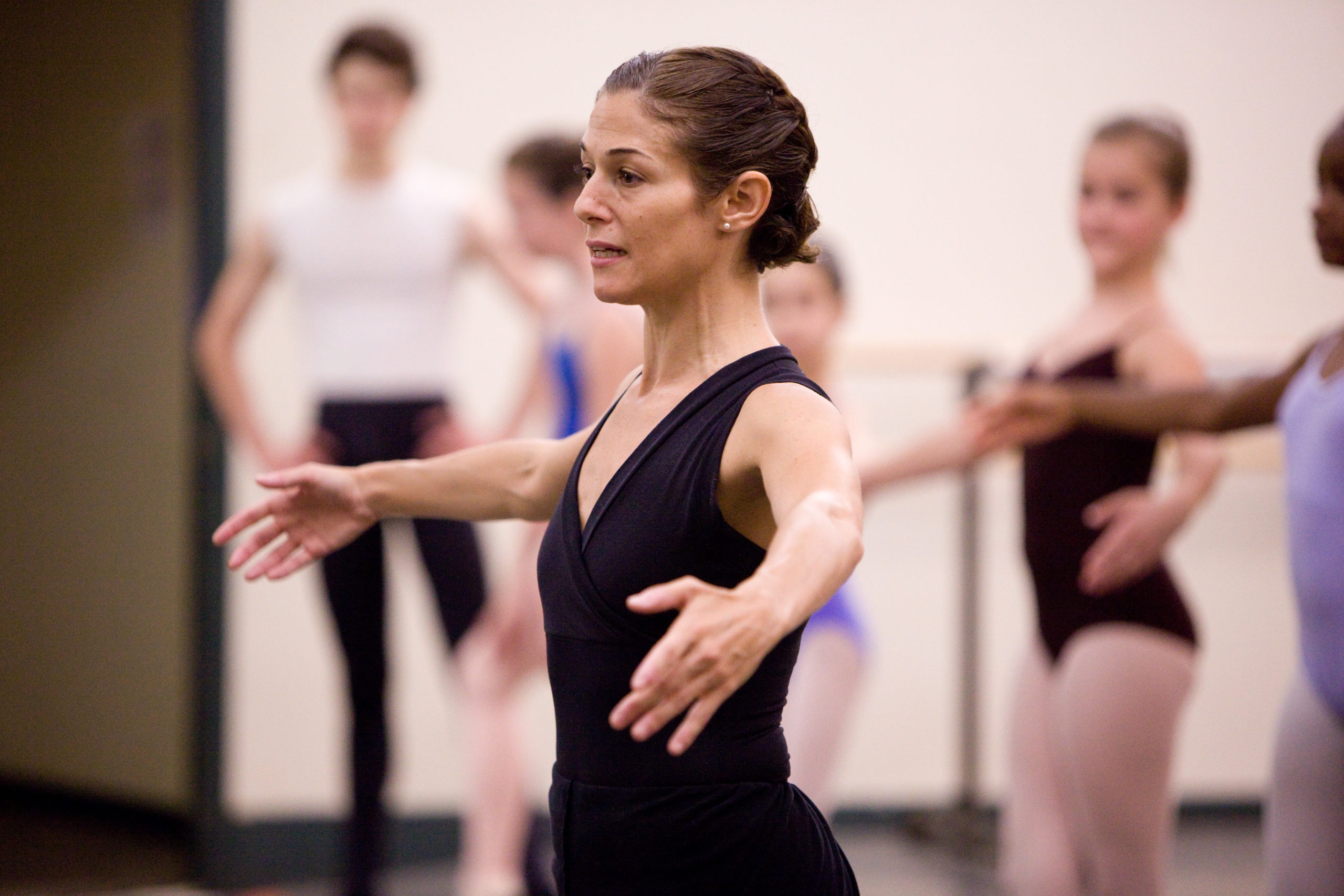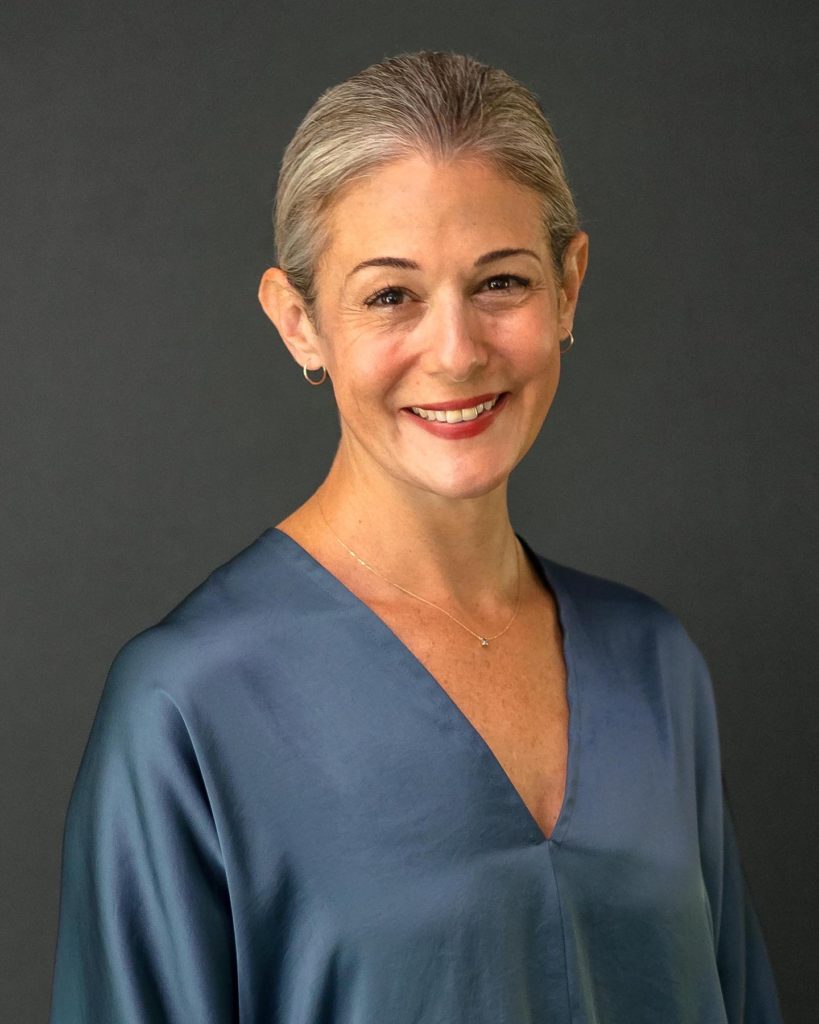
Pamela Levy has come full circle since her days as a graduate student in the ABT/NYU Master’s Program. She was in the first cohort when the program launched in 2008, and in August 2022 she was appointed its director.
In her new role, Levy shares her expertise as an alumna as well as a dance educator with over two decades of teaching experience. She is also dedicated to continuing the program’s goal of elevating dance teacher training and her personal mission of providing the very best in dance education. Additionally, Levy is also a member of ABT’s National Training Curriculum’s Artistic Board of Examiners and is the director of youth programs at Steps on Broadway.
Her passion for guiding young dancers is not only about helping them get better in their technique and artistry. It also comes from a deep desire to help them grow into their potential and reach farther than they thought they could—to not be afraid to fail. “I strive to build genuine trust with the students,” she says, “so they can understand that ‘failure’ is something positive that we all learn from.”

Dance Teacher interviewed Levy to find out more.
What do you like most about your teaching role?
Truly the best part about my work for ABT and NYU is the students! They are curious, open-minded, embrace challenges and support each other. I walk away from our classes excited, energized, and looking forward to what’s next.
What is the biggest challenge you’ve experienced working with today’s generation? How do you work through these challenges?
Graduate students put a lot of pressure on themselves and can be very focused on grades and perfection. But the goal of perfection interferes with meaningful learning. I encourage students to engage in the process, and to see our classes as a laboratory where feedback is a catalyst for growth. It is hard to take risks for exploration when feedback feels like judgment, so I try to be sure their assignments and assessments exist to facilitate their learning. This requires flexibility on my part, and attention to each student’s goals and needs.
What’s the best and worst advice you’ve ever been given as a dance educator?
The worst advice I received was as a 15-year-old student. A teacher told me to quit dancing. Although that was advice given to me as a student, it had a huge impact on my teaching. Thankfully, I knew it was terrible advice!
The best advice I received was from Franco De Vita when he was director of the JKO School, and I had just joined the faculty. He told me that as a teacher I should always strive to learn more. It was encouraging to hear this from such an accomplished person who I admire.
Who is your biggest role model in the dance education field?
Raymond Lukens has been my biggest role model since I began studying with him in 2008 as a student in the ABT/NYU program. He has guided so many dancers and teachers, and he’s like a walking encyclopedia of ballet! His love for the artform is inspiring. Additionally, Sherry Alban, who was one of my teachers growing up, and then later a colleague when we were on faculty together at Mason Gross School of the Arts at Rutgers University. Sherry invites students to understand their own potential as dancers and brings a beautiful mixture of empathy and expectation to her teaching that propels dancers to achieve that potential.
What message do you have for today’s dance educators who are continually working to inspire and empower the next generation?
Retain your sense of wonder, vulnerability and curiosity. Know yourself, your vision and your values. Know your students and their goals. Avoid doing things a certain way just because that’s how they were previously done. Continue to be empathic with your students and with yourself. Accept that you will make mistakes and embrace each mistake as impetus for positive change.
What is one “thing” that makes you and your teaching style unique?
I enjoy bringing creativity into ballet classes. Young children love to improvise, but older children become self-conscious. By retaining an element of improvisation in classes throughout their development and training, ballet dancers can continue to grow as expressive, autonomous and communicative artists.
As a graduate of the ABT/NYU program, what was the most valuable lesson or thing that you took away from it? How did it prepare you to be a better dance educator?
The ABT/NYU program takes a holistic approach to dance education. There is the ballet component of course, but then we also learned so much about educational theory, other styles of dance and other educators. It’s all connected. As a graduate I have the tools to now educate and inform myself, so I can better serve the students I work with. There is also now this huge community of other dance educators that I know from my time at NYU.
Now as the director of the program, what is your vision for how it can continue to shape future dance educators?
The application of ABT’s National Training Curriculum will continue to be a central component of the program as we move forward. It is a visionary body of work that is meant to adapt and grow to meet the needs of today’s dance environment. In addition, I am currently exploring how we maintain rigor in ballet training while simultaneously releasing the notion that perfectionism is a required element of that training. All artforms, including ballet, must progress and evolve in order to remain relevant.




